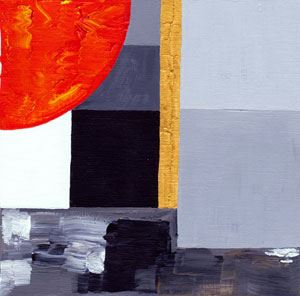Raids on the Unspeakable - 9th General Meeting and Conference of the Thomas Merton Society of Great Britain and Ireland - 2012
We see in Thomas Merton a fascinating paradox between the thinker and the monk. The thinker was rich in ideas, a writer endowed with a profound inner life, an eyewitness convinced that he was playing an important part in our common humanity through his attentiveness to all of Creation. The monk was committed to poverty, emptiness and nothingness with a complete trust that God would shape and guide his soul. Merton's 'studio', the hermitage, was quite simple: brush, plain table, commercial ink and paper but here, working with grasses, envelopes and ordinary 'things', he produced works of art carefully, sensitively, attentively. In the poverty of the hermitage, Merton came to grips with what he called "bare attention".

© Robert Wright
The medieval mystic Meister Eckhart said, "to touch our creativity is to touch our divinity." We tend to think of "real" theology as being only language-based but in reality many of us meet God in our senses before meeting him in words: think of the thrill of a glorious sunset or one of the frequent tragedies we see in the news. Of course, we may not meet God there, and many people never do. But when St. John of the Cross said, "God created the arts in order that life might be held together by them, so that we should not separate ourselves from spiritual things", he was reminding us of the truth that Robert Wright also seeks to explore in these intense, intimate paintings, because Robert believes that there is more to being human than language can explain. He hopes that in these paintings there can be some sort of coming together of mystery and illumination.
The artist Kandinsky believed that painting, like music, should be expressive of the artist's "inner life", the deepest intuitions and feelings, without recourse to "reproduction of natural phenomena." So, he said, "one should not approach art by means of reasoning and understanding, but through the soul, through experience." Robert's paintings, usually bright and colourful, radiate both calm and composure and whilst some may find them too precise, they do speak of harmony and order, as he explores both the inner life and the paint medium itself. And the artist hopes that they reflect something of the paradox of Merton mentioned above. This exploration invites us to use a language with which we are perhaps not familiar. It is in a way ironic to use the visual to describe spiritual matters of the heart, but because the paintings do not seek to represent any particular object, they can, given attentiveness, represent something "other" and are perhaps "large" enough to reflect whatever you, the viewer, bring to them.
